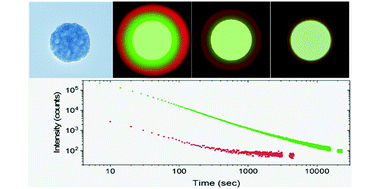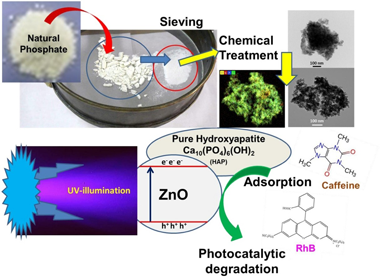Artículos SCI
2022
2022
Nanotecnología en Superficies y Plasma
Role of Surface Topography in the Superhydrophobic Effect-Experimental and Numerical Studies
Ibrahim, SH; Wejrzanowski, T; Przybyszewski, B; Kozera, R; Garcia-Casas, X; Barranco, AMaterials, 15 (2022) 3112
Show abstract ▽
Within these studies, the effect of surface topography for hydrophobic coatings was studied both numerically and experimentally. Chemically modified polyurethane coating was patterned by application of a laser beam. A set of patterns with variously distant linear peaks and grooves was obtained. The cross section of the pattern showed that the edges of the peaks and grooves were not sharp, instead forming a rounded, rectangle-like shape. For such surfaces, experimental studies were performed, and in particular the static contact angle (SCA), contact angle hysteresis (CAH), and roll-off angle (ROA) were measured. Profilometry was used to create a numerical representation of the surface. Finite volume method was then applied to simulate the behavior of the water droplets. The model developed herewith enabled us to reproduce the experimental results with good accuracy. Based on the verified model, the calculation was extended to study the behavior of the water droplet on the simulated patterns, both spiked and rectangular. These two cases, despite a similar SCA of the water droplet, have shown extremely different ROA. Thus, more detailed studies were dedicated to other geometrical features of such topography, such as the size and distance of the surface elements. Based on the results obtained herewith, the future design of superhydrophobic and/or icephobic topography is discussed.
Mayo, 2022 | DOI: 10.3390/ma15093112
Materiales Ópticos Multifuncionales
Transparent Phosphor Thin Films Based on Rare-Earth-Doped Garnets: Building Blocks for Versatile Persistent Luminescence Materials
Castaing, V; Lozano, G; Míguez, HAdvanced Photonics Research, 3 (2022) 2100367
Show abstract ▽
Afterglow properties of persistent phosphors are attracting a great deal of attention in the fields of bioimaging, sensing, labeling, safety, or security. Complex garnet oxides, especially those doped with Ce3+ and Cr3+, are particularly relevant to this end since their persistent luminescence can be tuned through matrix composition and activated by visible light, in contrast to the vast majority of persistent phosphors that require UV excitation. Most extended preparation routes yield micrometer-sized phosphors that display strong light scattering, which limits their versatility and applicability. Herein, nanostructured garnet oxide-based thin films that are transparent and feature persistent luminescence properties are demonstrated. Following a sol–gel route and after high temperature annealing, few hundred nanometre-thick Y3Al2Ga3O12:Ce3+,Cr3+ transparent films showing efficient green emission and afterglow are attained. Gd3Al2Ga3O12:Ce3+,Cr3+ transparent thin films displaying yellow afterglow with distinct persistent kinetics are demonstrated, to prove the generality of the approach herein proposed. Its versatility is further demonstrated by developing layered phosphors with time-dependent chromaticity due to the unique persistent emission color – upon blue light excitation – and kinetics of each layer forming the stack. The results pave an avenue toward nanodevices and multifunctional coatings in which afterglow offers hitherto unexplored properties.
Abril, 2022 | DOI: 10.1002/adpr.202100367
Nanotecnología en Superficies y Plasma
QUEELS: Software to calculate the energy loss processes in TEELS, REELS, XPS and AES including effects of the core hole
Tougaard, S; Pauly, N; Yubero, FSurface and Interface Analysis, 54 (2022) 820-833
Show abstract ▽
We present the user-friendly and freely available software package QUEELS (QUantitative analysis of Electron Energy Losses at Surfaces) that allows to calculate effective inelastic scattering cross sections within the dielectric response description, for swift electrons travelling nearby surfaces in several environments. We briefly describe the underlying theoretical models and illustrate its use to evaluate the distribution of energy losses taking place in electron spectroscopies like transmission electron energy loss spectroscopy (TEELS), X-ray photoelectron spectroscopy (XPS), Auger electron spectroscopy (AES) and reflection electron energy loss spectroscopy (REELS), which are widely used for material analysis. This includes the intrinsic excitations due to the core hole in XPS and AES.
Abril, 2022 | DOI: 10.1002/sia.7095
Reactividad de Sólidos
Highly uniform Y3Al2Ga3O12-based nanophosphors for persistent luminescence bioimaging in the visible and NIR regions
Arroyo, E; Herrero, BT; De la Fuente, JM; Ocaña, M; Becerro, AIInorganic Chemistry Frontiers, 9 (2022) 2454-2461
Show abstract ▽

In the last few years, persistent phosphors with a garnet crystal structure have attracted a great deal of interest for a plethora of applications ranging from bioimaging to anti-counterfeiting technologies. However, the development of synthesis methods to fabricate uniform garnet-based micro and nanoparticles, that are needed for such applications, is not mature at all. This study reports the synthesis of highly uniform yttrium aluminum gallium garnet nanospheres. The method is based on homogeneous precipitation in a polyol medium followed by silica coating and calcination. The nanoparticles resulting after silica removal were also uniform and were easily functionalized with polyacrylic acid. The colloidal stability of the latter in physiological media and their biocompatibility were analyzed. The luminescence of the particles, doped with Ce3+, Cr3+, and Nd3+, was studied by recording emission and excitation spectra and persistent luminescence decay curves. Due to their uniform morphology, high colloidal stability, absence of toxicity, and persistent emission in the visible and near-infrared regions, the reported nanospheres show great potential as persistent luminescent bioimaging probes. In addition, the synthesis method paves the way for future use of this persistent material in other applications that require the phosphor to be in the form of highly uniform nanoparticles.
Abril, 2022 | DOI: 10.1039/d2qi00480a
Fotocatálisis Heterogénea: Aplicaciones
Fast photodegradation of rhodamine B and caffeine using ZnO-hydroxyapatite composites under UV-light illumination
KarimTanji, J.A.Navio, Abdellah Chaqroune, Jamal Naja, F.Puga, M.C.Hidalgo, AbdelhakKherbecheCatalysis Today, 388 (2022) 176-186
Show abstract ▽

Zinc oxide-hydroxyapatite composites were prepared using wet impregnation method. Firstly, a natural phosphate ore rich in silica and calcium phosphate was sieved to separate silica phase from phosphate phase. Then, through a chemical precipitation method, a pure hydroxyapatite (HAP) was obtained, which was used as a support for ZnO immobilization and applied for the photodegradation of two toxic contaminants: a transparent molecule (caffeine) and dye molecule (rhodamine B). During the present work two weight ratio percentages of zinc oxide were used: 25 wt.% and 50 wt.% of ZnO relative to HAP. The samples were characterized by X-ray diffraction (XRD), Fourier Transform Infrared (FTIR), X-ray Fluorescence (XRF), BET surface area (SBET), Scanning Electron Microscopy (SEM-EDS) and by Transmission Electron Microscopy (TEM-STEM). The immobilization of ZnO on HAP surface followed by thermal treatment at 400 °C for 2 h to get a homogenous dispersion of ZnO on the hydroxyapatite support. At high ZnO impregnation percentage, photodegradation performances of ZnO-HAP under UV illumination were fast and superior than the ZnO photocatalyst alone. The results showed that due to the presence of HAP, the conversion of both molecules became faster and greater, since it promotes the synergic phenomena of adsorption and photocatalysis. The toxicity of the treated substrate solutions obtained in the corn kernels germination test indicated a low toxicity after the photodegradation processes, probably due to a high mineralization degree.
Abril, 2022 | DOI: 10.1016/j.cattod.2020.07.044
- ‹ anterior
- 52 of 410
- siguiente ›














